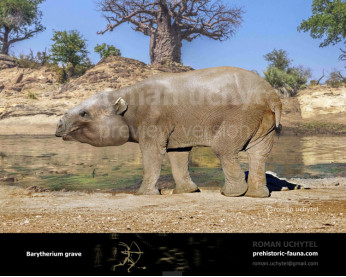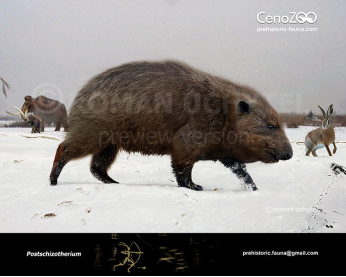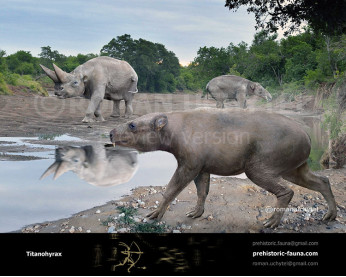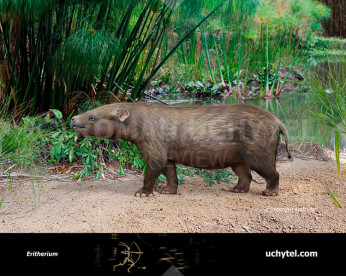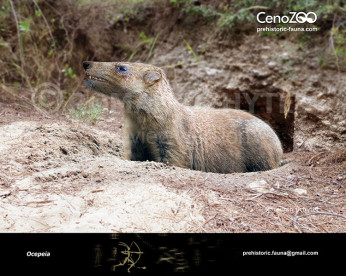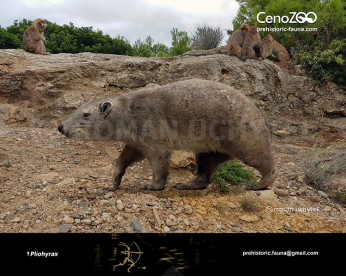Kvabebihyrax kachethicus
8888Kvabebihyrax kachethicus (Kvabebihyrax Gabunia & Vekua, 1966)
Order: Hyracoidea
Family: Pliohyracidae
Dimensions: length - 150 сm, height - 70 сm, weight - 80 kg
Temporal range: Late Pliocene of Eastern Georgia (~3 – 2,5 Ma years ago)
A typical representative: Kvabebihyrax kachethicus Gabunia & Vekua, 1966
Kvabebihyrax – a genus of very large hyrax of Pliohyracidae family. They lived only in Transcaucasia (Eastern Georgia) in the late Pliocene. They were distinguished by their large size: the length of their massive bodies reached 1.5 m. Their eye sockets were small, considerably protruding over the temple and looking sideways, and at the same time set out far beyond the skull.
Judging by the relatively short and very high nasal bones, as well as by the large nasal incisure, notably stretching backwards, Kvabebihyrax could have a small proboscis. Possibly, the noted original combination of characteristics of Kvabebihyrax points to its adaptation to river and lakes habitat, among swampy brushwood of forest thickets.
The protruding of Kvabebihyrax’ eye sockets over the temple, resembling that of hippopotamus, indicates the ability of Kvabebihyrax to hide underwater. Probably, in water Kvabebihyax searched for shelter in moments of danger.
Kvabebihyrax kachethicus (Kvabebihyrax Gabunia & Vekua, 1966)
Order: Hyracoidea
Family: Pliohyracidae
Dimensions: length - 150 сm, height - 70 сm, weight - 80 kg
Temporal range: Late Pliocene of Eastern Georgia (~3 – 2,5 Ma years ago)
A typical representative: Kvabebihyrax kachethicus Gabunia & Vekua, 1966
Kvabebihyrax – a genus of very large hyrax of Pliohyracidae family. They lived only in Transcaucasia (Eastern Georgia) in the late Pliocene. They were distinguished by their large size: the length of their massive bodies reached 1.5 m. Their eye sockets were small, considerably protruding over the temple and looking sideways, and at the same time set out far beyond the skull.
Judging by the relatively short and very high nasal bones, as well as by the large nasal incisure, notably stretching backwards, Kvabebihyrax could have a small proboscis. Possibly, the noted original combination of characteristics of Kvabebihyrax points to its adaptation to river and lakes habitat, among swampy brushwood of forest thickets.
The protruding of Kvabebihyrax’ eye sockets over the temple, resembling that of hippopotamus, indicates the ability of Kvabebihyrax to hide underwater. Probably, in water Kvabebihyax searched for shelter in moments of danger.

-797x638.jpg)
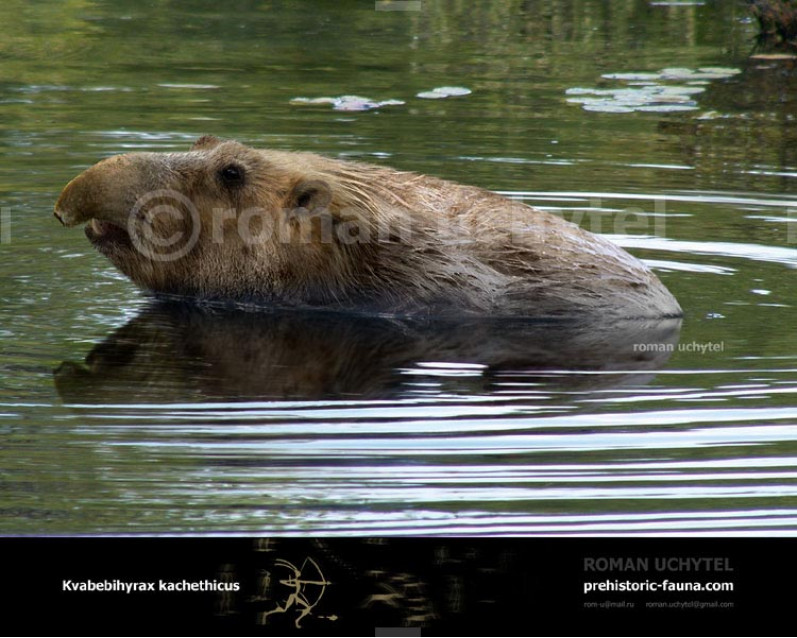
-797x638.jpg)
-70x56.jpg)

-70x56.jpg)
